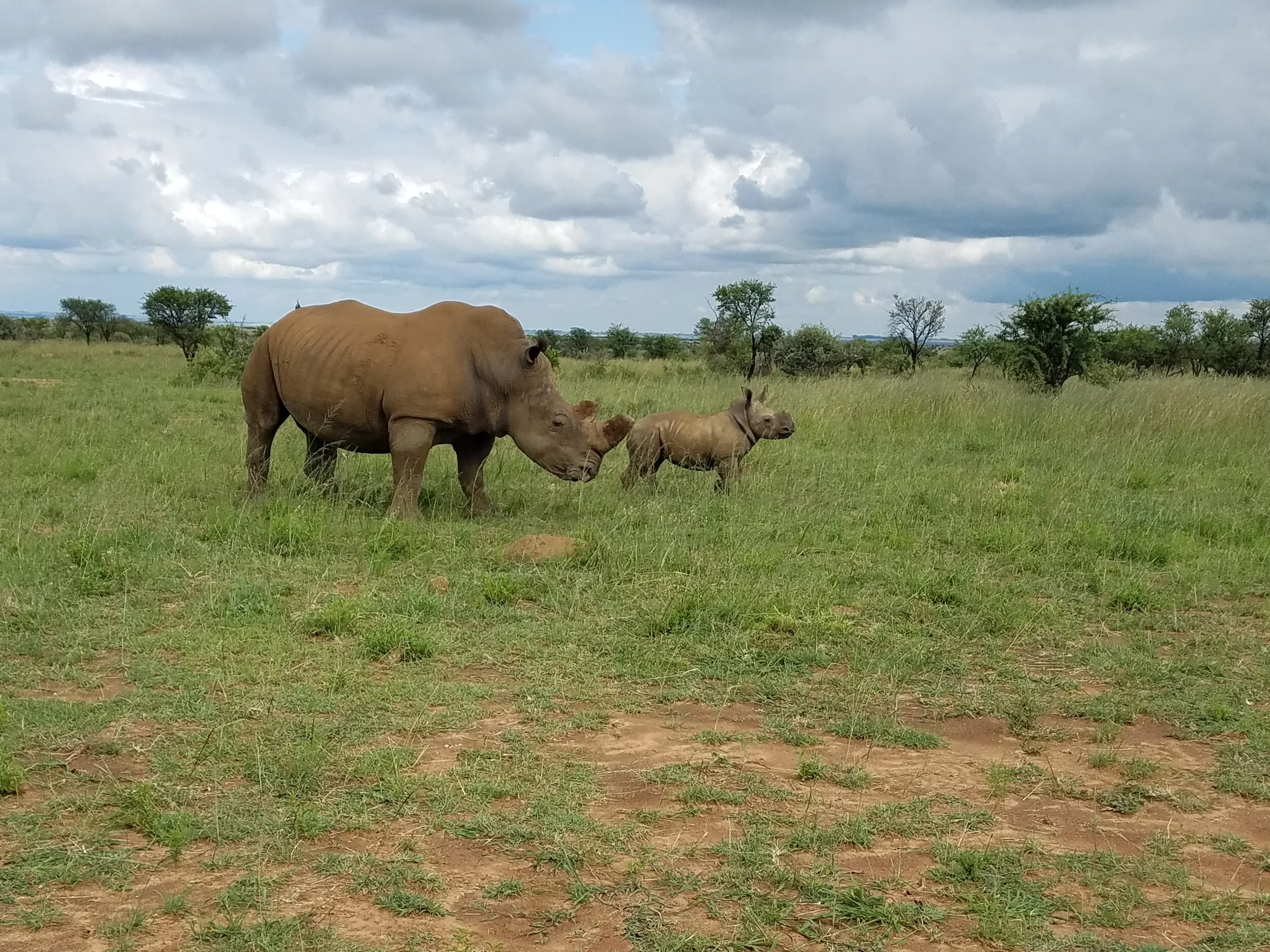
Research
Applied. Interdisciplinary. Global.
Conservation efforts require the integration of natural and social sciences to be successful.
I use quantitative and qualitative methods from a blend of fields to conduct social science research that I translate into policy and program recommendations aimed at securing on-the-ground conservation results.
I address conservation issues of global importance, including sustainable use and wildlife trade, human-wildlife conflict, and promoting the engagement of private landowners in wildlife and habitat conservation.
Research Projects
Photo: pelican
Elephant care staff perceptions of protected contact management
Documenting elephant care staff’s experience transitioning from free contact to protected contact.
Photo: Leslie Stormes
Assessment of landowner motivations and hurdles to enrolling in conservation programs and adopting conservation practices
Understanding landowner motivations for engaging in pro-conservation behaviors such as burning and thinning.
Photo: Shotaku
Public perceptions of the forestry industry and a mass timber outreach campaign
Identifying preferred language related to the benefits of managing healthy forests and exploring barriers to mass timber adoption in the rural Mississippi Delta for use in emergency infrastructure.
Photo: Elena Rubino
Improving communications related to trophy hunting
Testing how strategic messaging can improve public support for trophy hunting based on social identity.
Photo: Watts
Red panda poaching and perceptions of pangolins
Investigating drivers of red panda poaching and improving perceptions of pangolins among Nepali farmers.
Photo: ucumari photography
Measuring public support for red wolf reintroductions in Ozark National Forest, AR
Documenting perceptions of and attitudes towards red wolf reintroduction and conservation in Ozark National Forest and across the state.
Photo: Arkansas Tourism
Community perceptions of the role of the Little Rock Zoo in conservation
Exploring how Little Rock, AR residents perceive the Little Rock Zoo, specifically as related to the Zoo’s local and global conservation efforts.
Photo: USFWS
Testing communication strategies to increase Houston toad Safe Harbor Agreement enrollment
Identifying the most salient communications content for various landowner typologies and determining optimal SHAs given landowner preferences.
Photo: Carolyn Savell
Public perceptions of Chronic Wasting Disease in Texas
Investigating the beliefs, attitudes, and behaviors of landowners in CWD-affected counties and TX hunters.
Photo: Dennis Jarvis
Human-elephant conflict in Sabah, Malaysia
Exploring oil palm smallholder-elephant conflict through an environmental justice lens.
Photo: Dennis Church
North Carolina migratory bird hunters' attitudes towards Sunday hunting
Exploring a) the factors that shape support/opposition for Sunday hunting, and b) how behaviors would change if Sunday hunting were legalized.
Photo: Tim Ellis
Human-tiger conflict in Sariska Tiger Reserve
Exploring perceptions on tiger reintroductions and human-tiger conflict using an environmental justice lens.
Photo: Elena Rubino
Incentivizing rhinoceros conservation among private landowners in South Africa
Understanding why private wildlife ranchers own rhinoceros and how they can be incentivized to further engage in rhinoceros conservation via a global rhinoceros horn trade.
Photo: Elena Rubino
Wildlife and habitat conservation on private lands in South Africa
Documenting the motivations and sustainable use practices of private wildlife ranchers in South Africa.
Photo: Mike Prince
Invasive axis deer population management, Maui Island, HI
Assessing residents’ preferences for various axis deer population management alternatives.
Peer-Reviewed Journal Articles
(graduate student author)
Serenari, C., Pratt, E. N., Meeks, A., Rubino, E. C. & Daniel, K. L. (in press). Potential for Conflict Among Spring Alligator Hunters in Texas. Human-Wildlife Interactions.
Toth, M.G. & Rubino, E.C. (2024). Assessing public support for a red wolf reintroduction with varying message treatments. Wildlife Research.
Rozing, E., Rubino, E.C., Turner, K.A., & Larasatie, P. (2024). Evaluating public attitudes toward trophy hunting using social license to operate. Human Dimensions of Wildlife.
Messick, J.A., Serenari, C., & Rubino, E.C. (2024). Communicating expectations: Informing strategic communications by conservation level segmentation and impression management preferences. Society and Natural Resources.
Olmedo, A., Veríssimo, D., Challender, D.W.S., Dao, H.T.T., Rubino, E.C., Milner-Gulland, E.J. (2024). Designing celebrity-endorsed behavioral interventions in conservation. Conservation Biology.
Rubino, E. C. & Serenari, C. (2023). Comparing stakeholder risk perceptions and behaviors related to chronic wasting disease in free-range and captive deer. International Journal of Global Environmental Issues.
Serenari, C. & Rubino, E. C. (2023). Legitimacy and Wildlife Disease: Should Chronic Wasting Disease be Managed without Government?. Journal of International Wildlife Law & Policy. https://doi.org/10.1080/13880292.2023.2217614
Rubino, E. C., Tian, N., White Jr., D., Ballard, J. R., Middaugh, C., Gray, C., & Gramza, A. (2023) Using increasing hypothetical chronic wasting disease prevalence rates to explore hunter behavioral intention and hypothetical bias in surveys. Human Dimensions of Wildlife. https://doi.org/10.1080/10871209.2023.2243974
Rubino, E. C. & Serenari, C. (2023). A family systems theory approach to hunters’ chronic wasting disease-related perceptions and behaviors. Human Ecology. doi.org/10.1007/s10745-023-00407-y
Rubino, E. C. & Serenari, C. (2022) Using latent profile analysis to evaluate viability of chronic wasting disease management options among different hunter types. Animals, 12, 2751.
Rubino, E. C. & Serenari, C. (2022). Using the capabilities-opportunity-motivation-behavior (COM-B) system to conceptualize the legalization of Sunday migratory game bird hunting in North Carolina as a recruitment, retention, and reactivation strategy. Journal of Rural Social Sciences, 37(3), 1-14.
Tian, N., Rubino, E. C., Gan, J., Gutierrez-Castillo, A., & Pelkki, M. (2022). Private landowners’ willingness-to-pay for certifying forestland and influencing factors: Evidence from Arkansas, United States. Environmental Challenges, 9, 100600.
Rubino, E. C. & Serenari, C. (2022). Using different migratory game bird hunter types to explore drivers of support for hunter recruitment, retention, and reactivation policies. Sustainability, 14, 3820.
Rubino, E. C. & Serenari, C. (2022). Texas stakeholders’ knowledge and perceptions of chronic wasting disease risks: Implications for wildlife agency communications. Human-Wildlife Interactions, 16(1), 1-16.
Rubino, E. C. & Serenari, C. (2022). Landowner perceptions of and preferences for chronic wasting disease management. Environmental Challenges, 8, 100582.
Rubino, E. C. & Williams, C. K. (2022). Exploring public support for large-scale commercial axis deer harvests in Maui, Hawaii. Sustainability, 14, 1837.
Doubleday, K. F. & Rubino, E. C. (2021). Tigers bringing risk and security: Gendered perceptions of tiger reintroduction in Rajasthan, India. Ambio.
Cavalier, R. M., Pratt, E. N., Serenari, C., & Rubino, E. C. (2021). Human dimensions of crocodilians: A review of the drivers of coexistence. Human Dimensions of Wildlife, 1-17.
Rubino, E. C. & Doubleday, K. F. (2021). A Gendered Environmental Justice Perspective of Tiger Reintroductions to Sariska Tiger Reserve. Journal of Rural Social Sciences, 36(1), Available at: https://egrove.olemiss.edu/jrss/vol36/iss1/5
Rubino, E. C., Serenari, C., Othman, N., Ancrena, M., Sarjono, F., & Ahmad, E. (2021). Viewing Bornean Human-Elephant Conflict through an Environmental Justice Lens. Human-Wildlife Interactions, 14(3), 487-504.
Messick, J., Serenari, C., & Rubino, E. C. (2021). Determinants of private landowner participation in endangered species conservation: A comprehensive review and analytical framework. Society & Natural Resources. https://doi.org/10.1080/08941920.2020.1865495
Rubino, E. C. & Pienaar, E. F. (2020). Rhinoceros ownership and attitudes towards global horn trade legalisation within South Africa’s private wildlife sector. Oryx, 54(2), 244-251. doi: https://doi.org/10.1017/S0030605318000030
Rubino, E. C., Pienaar, E. F., & Soto, J. R. (2018). Structuring legal trade in rhino horn to incentivize the participation of South African private landowners. Ecological Economics, 154, 306-316. doi: https://doi.org/10.1016/j.ecolecon.2018.08.01
Rubino, E. C. & Pienaar, E. F. (2018). Understanding South African Private Landowner Decisions to Manage Rhinoceroses. Human Dimensions of Wildlife, 23(2), 160-175. doi: https://doi.org/10.1080/10871209.2018.1402971
Rubino, E.C. & Pienaar, E.F. (2017). Applying a conceptual framework to rhinoceros conservation on private lands in South Africa. Endangered Species Research, 34, 89-102. doi: https://doi.org/10.3354/esr00844
Pienaar, E. F., Rubino, E. C., Saayman, M., & van der Merwe, P. (2017). Attaining sustainable use on private game ranching lands in South Africa. Land Use Policy, 65, 176-185. doi: https://doi.org/10.1016/j.landusepol.2017.04.005















